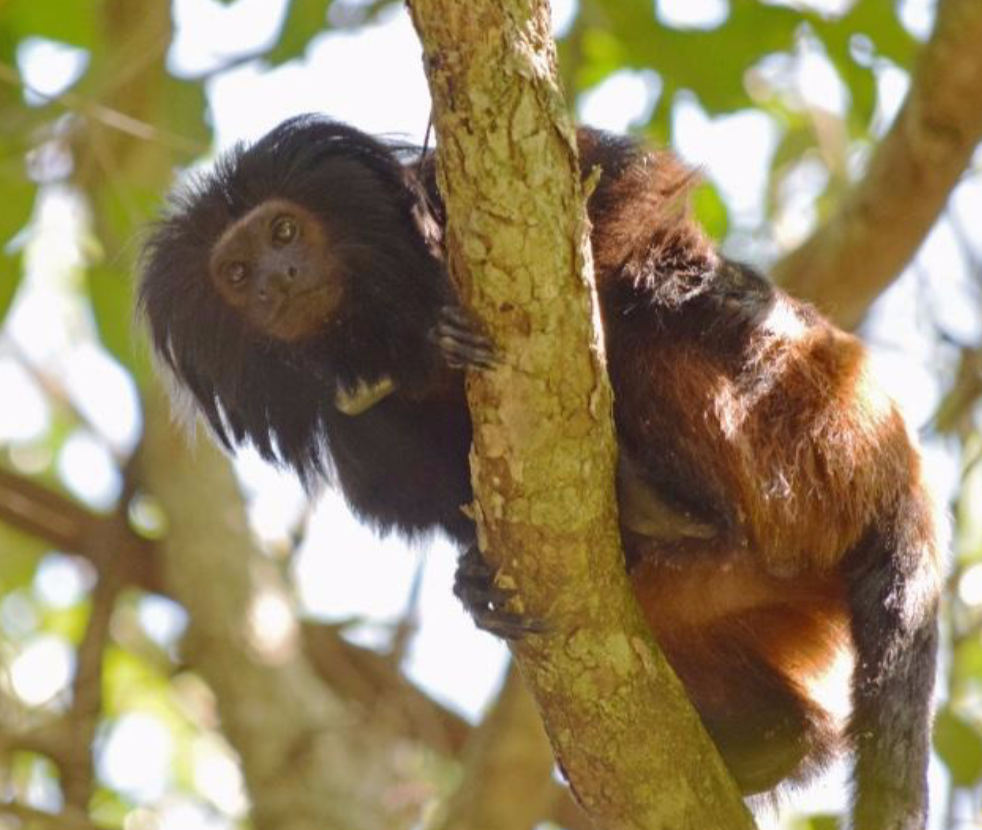By Katrien Delaet | Chief Operation Officer
WeForest and its partner IPE are supporting the restoration of forest corridors in the Atlantic Forest, in Pontal. The areas are critical for the survival of the black lion tamarin, as forest corridors will increase their habitat and improve landscape connectivity. Protecting and restoring the Atlantic Forest would mean conserving this species last remaining habitat and securing its long-term survival.
Around 800 of the remaining black lion tamarins live in the Morro Do Diabo State Park. In April 2017, a new group of black lion tamarins was captured in the North of the Morro do Diabo State Park. This is the second group that will be monitored through GPS tracking devices. The black lion tamarins get a collar with GPS tracking function, and the data gathered from these collars will be integrated in a study on the use of space, movement patterns, habitat preference and energy expenditure by the black lion tamarins in different fragments. The GPS technology is widely used for larger species, but it is the first time we are using this on small primates (<1kg). The first wild group with a GPS collar is being monitored since July 2016 and we will soon retrieve the data for the first results. With this technology, we can monitor a greater number of groups simultaneously, and increase the amount of information gathered from the field. "Our plan is to expand our monitoring work to even more populations and get a great amount of useful information to support the species conservation planning", explains the project coordinator Gabriela Rezende. The information gathered from wildlife movement allows us to further expand the forest restoration project and smartly decide where the next corridors will be located to enlarge the habitat of endangered species. A new area that we are discovering is a corridor in the North of the Morro do Diabo State Park, where isolated populations of the Black lion tamarins are still present.
It is the perfect timing to start working here and reduce the extinction risk of these tiny black lion tamarin populations!
Project reports on GlobalGiving are posted directly to globalgiving.org by Project Leaders as they are completed, generally every 3-4 months. To protect the integrity of these documents, GlobalGiving does not alter them; therefore you may find some language or formatting issues.
If you donate to this project or have donated to this project, you can receive an email when this project posts a report. You can also subscribe for reports without donating.
Support this important cause by creating a personalized fundraising page.
Start a Fundraiser